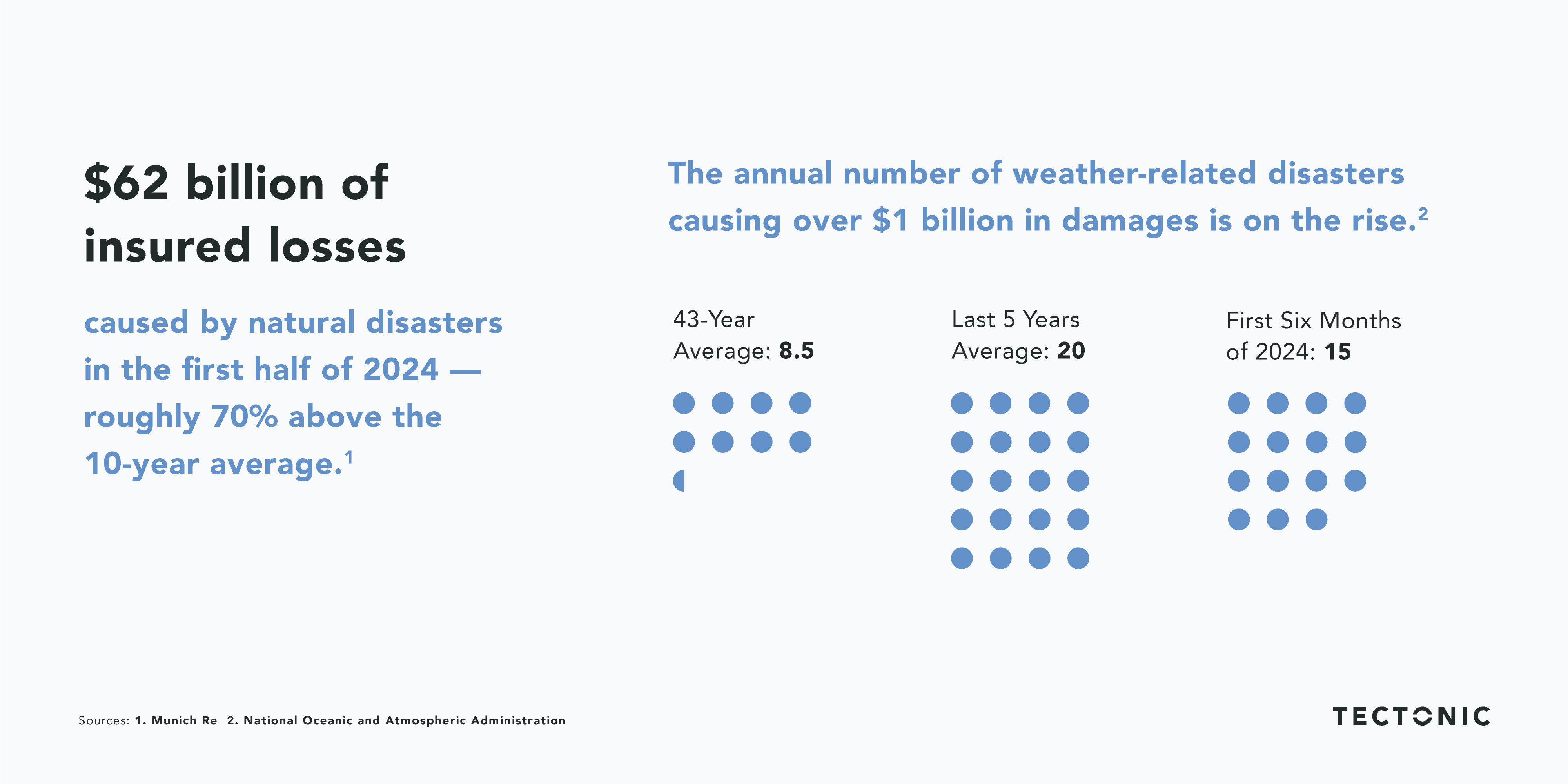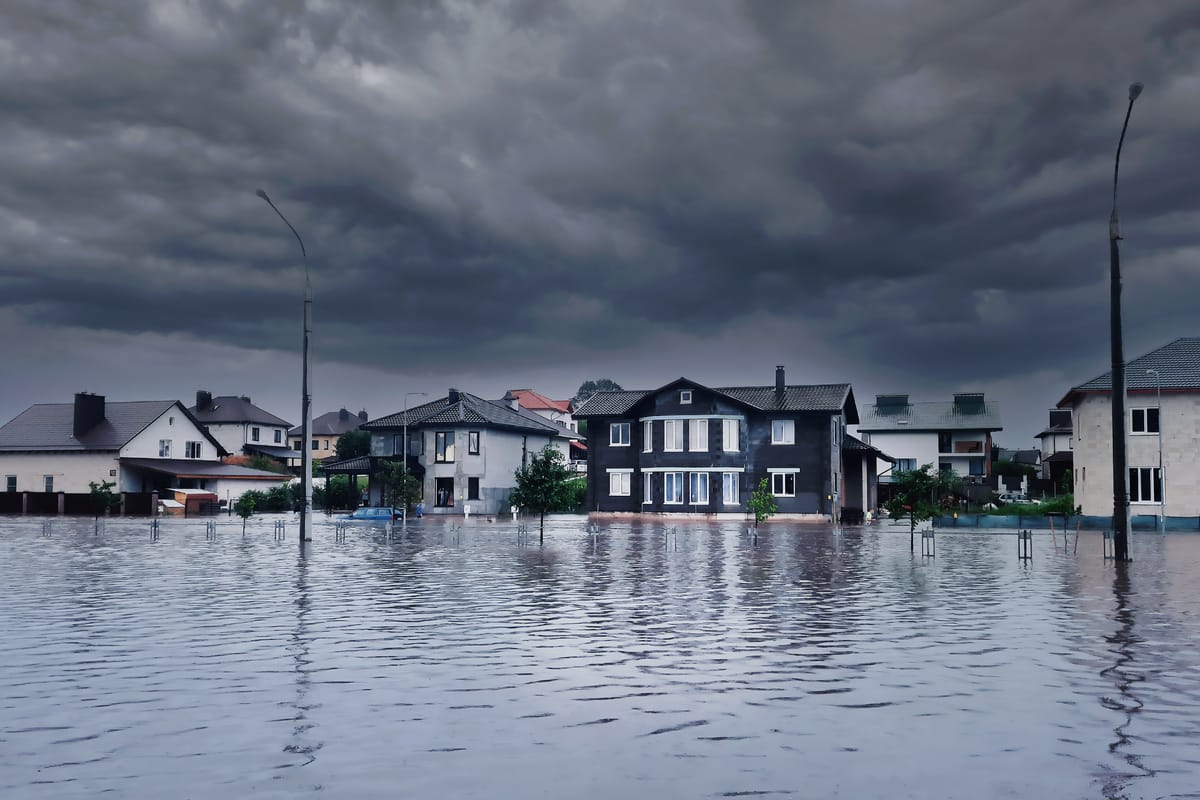This week, we explore the escalating impact of severe weather and how two different robots are reducing the costs of solar panel installation and helping farmers capture carbon from crop waste.
Governments and companies invest in climate adaptation: With the increasing toll of climate change on critical infrastructure and mitigation efforts taking longer than expected, governments and private investors are shifting more resources to adaptation, which currently accounts for about 5% of the $1.3 trillion spent annually on climate efforts. In the low-lying Philadelphia neighborhood of Eastwick, the federal government is investing $10 million to construct flood barriers several feet high and restore nearby wetlands, part of a multi-billion dollar commitment from FEMA and NOAA for similar projects. New York City, meanwhile, is embarking on a $200 million construction effort to rebuild and raise a portion of the southern tip of Manhattan impacted by rising water levels. The energy company ConEd is working with New York State and Columbia University to predict how weather patterns will affect their grid and replacing underground transformers with systems that can work underwater during flooding.

Robots cut costs of solar panel installation: One of the biggest renewable energy companies in the United States, AES Corporation, introduced a new robot that can move and install heavy panels that make up large solar arrays. The company estimates the robot will be able to install panels twice as fast as humans at half the cost, cutting the core costs of solar installation, which the IEA estimates will need to triple by 2035. The robot, nicknamed Maximo, will begin work in the California desert later this year to install panels at the largest solar and battery project under construction to power Amazon data centers.
Home solar panel installation scales in Germany: Smaller solar panels that can be easily installed on the sides of balconies and in backyards are popping up across Germany. More than 500,000 systems have been set up nationwide, though the smaller panels, which retail for around $200-400, produce only enough electricity to charge a laptop or run a small refrigerator. Users can track energy generated by their units via an app, which has also added social elements and competition between neighbors. The EU aims to quadruple power from photovoltaic sources by 2030 to 600 gigawatts, with Germany targeting a third of that amount by the end of the decade.
Applied Carbon raises $21.5 million led by TO VC to scale biochar production: Applied Carbon has developed a mobile robotic system that attaches to a standard tractor, collects crop waste, converts it to biochar, and redistributes it to the field. Using technology to streamline a technique that originated over 2,500 years ago in the Amazon, the process improves soil health and traps carbon, which can unlock additional revenue from carbon credit sales for participating farmers.
Recycled shells used in Olympic track: Recycled shells from mollusks native to the Mediterranean Sea were used to manufacture the synthetic purple track in the Olympic stadium in Paris. The track designer Mondo leveraged shells that would have otherwise been wasted to source calcium carbonate, which is typically obtained through mining. A network of fishers cleaned and dried the shells, grounded them into a powder, and sent them to the manufacturer to convert the material into the track – a process that was perfected over three years.
Research shows methane emissions four times higher than previously estimated: New research from the Environmental Defense Fund released this week found that the 12 largest U.S. oil and gas facilities – which account for more than 70% of the nation’s oil and gas production – emit four times more methane gas than regulators previously estimated. The rate of emissions is eight times higher than a target set by major oil and gas companies at COP28 last year, and major operators would need to cut emissions by roughly 80% to meet their own targets.
Transition credits gain steam in Asia: A new form of carbon credits to advance the phase-out of coal-fired power is gaining traction in Asia, including with Temasek, Standard Chartered, and the Monetary Authority of Singapore. Analysts estimate transition credits priced around $25-35 per ton could help accelerate the phaseout of coal power plants by offsetting the shortfall in revenue from power assets that close ahead of schedule.
The UK increases investment in renewable energy: The UK is set to increase its investment in renewable power generation by almost 50% to $1.9 billion. Two-thirds of the investment will go to traditional offshore wind farms, where Prime Minister Keir Starmer has vowed to quadruple capacity to 55 gigawatts by the end of the decade.


